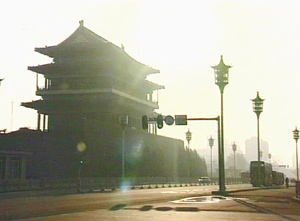Source:
01-13-2006 17:08

The first walled city on the site of present-day Beijing was built around three thousand years ago. Since then, the city has gone through many phases of construction and different names. In the early fifteenth century, Beijing became the capital of the Ming Dynasty. The Ming Emperor, Chengzu, established several massive construction projects. The Inner City wall and its nine gates were built at this time. As the Emperor was seated at court facing south, the central southern gate was designed to represent his power. Zhengyang Gate was the largest of the city gates. It would open only for the Emperor to perform annual rituals.

Zhengyang Gate’s location as the central southern gate gave it a special symbolic function. Since the Emperor was seated at court facing south, the southern gates were all larger than the others. Zhengyang Gate was directly south of the Emperor and was the largest. The central gate was opened only for the Emperor. Others passed through a smaller side gate. Later, the area outside Zhengyang Gate became a thriving commercial area. The imposing gate that had protected Beijing for centuries became a barrier to transport. There was growing pressure to remove the gate.

Zhengyang Gate was one of the first of Beijing’s city gates to fall to the demands of the new times. Modern warfare made the imposing city walls and gates obsolete for defence. Despite pressure from many to retain Zhengyang Gate, the project would go ahead. The gate was kept as a piece of history but it no longer serves its original function. In following years, the pressure of development would take its toll on other historic gates. Most of them would not survive. Join us tomorrow for the final instalment of our four-part series “Memories of the City and City Gates of Beijing.”
Editor:Wang Ping
